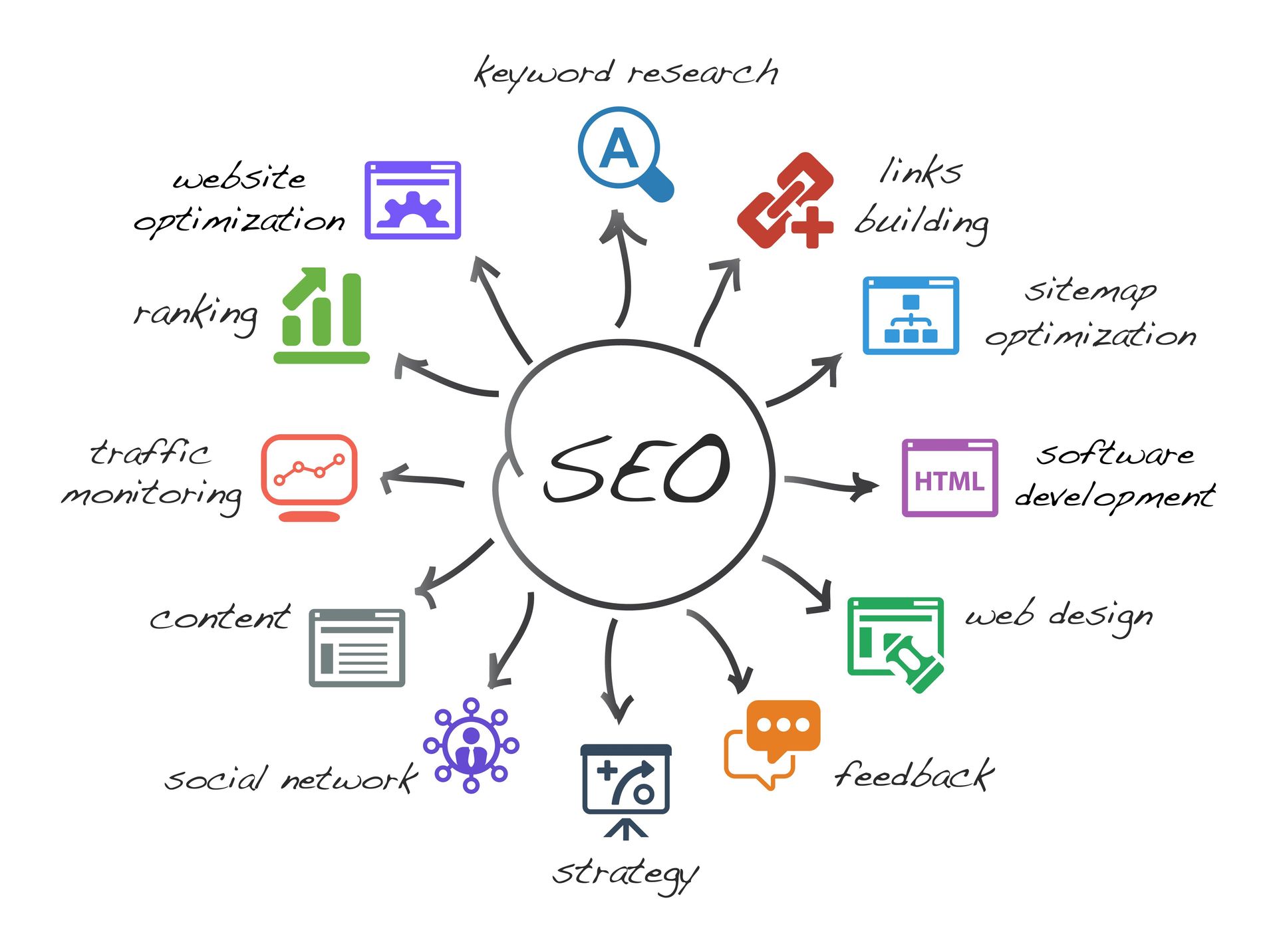A bad website is like a flat tyre. You can't go anywhere, until you change it
Marketers often feel it's hard to demonstrate ROI and the impact their programmes have on revenue, particularly with digital advertising or social advertising. But with good website optimization and the right tools in place, you can measure more clearly the return on your investment.
With a combination of metrics, both front end and back end, and an attribution model that makes sense for your company, you will be able to share insights into the effectiveness of your marketing efforts, for paid search advertising and organic search.
During a search engine optimization (SEO) campaign, you will need to use Google Analytics to track the performance of your keywords in order to have a successful campaign.
During the initial optimization campaign, the number of performing keywords may be small. But as time goes by, you will start getting more keywords being listed on organic listings, due to your overall optimization effort.
Analytics is a free tool, but in the right hands it offers just as much or even more functionality when compared to other paid tools.
Google Analytics can:
- Open up a world of information you probably never knew about visitors on your site: where they come from and what they do once they arrive
- Show insights on how to optimize landing pages, depending on where visitors arrive from, the mindset they have (and what you want them to do)
- It can show you how visitors locate your website. Other than the core set of keywords you're optimizing, you'll also be able to find out what other keywords your visitors type in to find your site
- Help to fine tune your website. Highlight hot spots and cold spots on your site, enabling you learn from pages that are doing well and improve things like keyword density, the customer journey and page layout
- It can help with visitor segmentation and customer personas. With this, you will be able to know how many new visitors your SEO campaign brings. You can segment your analytics by new/returning visitors, geography and referral sources
- Collect traffic data from other referral sites and search engines such as Bing and Yahoo! not just Google. You can use this to strengthen the performance of your content on these platforms
- Gain more high quality prospects and customers for your business, at a lower cost


Define your analytics approach
Are you obsessed with bounce rate?
Bounce rate is the percentage of single-page visits or visits in which the person left your site from the entrance (landing) page. It seems like a simple enough definition, but you can get yourself into trouble by misinterpreting bounce rate.
It's easy to assume: high bounce rate bad, low bounce rate good.
Yet you could have an excellent, engaging website (for your target audience)and still have a high bounce rate. Other factors that determine this are the type of referral traffic that is creating the issue, the promise you make to visitors in the 'call to action' as well as the individual page you show them once they arrive. Regular visitors may click on a single page of content and leave with a good feeling about your brand. New visitors will tend to have a lower bounce rate. This is a mix that can constantly change, depending on your campaign activity.
Clicks between domains and subdomains count as bounces. This is yet another reason why bounce rate can be misleading.
Are you obsessed with time on site?
Have you got your eye on the clock? If so, this can be another flawed metric. It all depends on how you define a successful site visit.
Consider, that a visitor hits the home page. One minute later, they click to another page and then they see an attractive offer and click through to a third page. The visitor notices the fine print and leaves.
This is an example of a fairly high time-on-site, but not a good user experience. The time spent on the final page was not measured (and therefore omitted). The time spent on the final page could have doubled the total time on site.
What if a user opens a link on your site in a new tab, and your site remains open in the background? How useful a metric can time-on-site be when bouncing visitors don't even get counted? If your strategy is to direct your visitors into specific deep pages or landing pages, rather than the home page, it's more likely they will have a good experience, but spend less time on site.
As your blog grows and your referral sources become more diverse, your time on site is likely to go down, rather than up.
Are you obsessed with page views?
For the most part, only those sites which actually benefit from multiple page views (such as sites with pay-per-impression ads) should be paying attention to page views.
A high number of views could mean that visitors are wandering hungrily through your blog pages without any clear intent to do what you want them to do. It could mean that your navigation elements are misleading, and your visitors are clicking from page to page in frustration before leaving. A single page view, as is the case with bounce rate, could still mean the visitor has had a good experience of your brand, and that they intend to come back and spend next time.
You need to consider, what defines success for your site?
What benefits does a visitor reading multiple pages really bring you?
Do you consider the human element?
In the final judgement, the numbers you find in your Analytics are just that, numbers. They can be flawed and they can be misleading. They do have value - especially when we show them in a holistic way, in graphical form to clients - but to view them as objective evidence of site quality would be wrong.
Depending upon your business objectives, each of the three metrics covered above could be viewed in a different light.
You don't know what you want?
The real question is this: have you taken a clear aim at what you want visitors to do on your site?
If you want to promote engagement and increase sales, conversions, members or whatever metric you use, you need to take a long hard look at your Analytics.
Do you really have a crystal-clear idea of the reason for your site's existence? Consider that question carefully.
What about you?
If we have helped you to take a different perspective on Analytics and site optimization, contact us today to find out how we can lead you to the next step.
Are you making any of these digital marketing mistakes?
- Don't start an ad campaign unless you have a clear picture of your site stats.
Study your traffic sources, the demographics of visitors and the mindset of each group. Then, you can choose a platform that matches its readers with your target audience
- Do give careful consideration to your attribution model.
This is the rule, or set of rules, that determines how credit for sales and conversions is assigned to touchpoints in conversion paths. For example, the Last Interaction model in Analytics assigns 100% credit to the final touchpoints (clicks) that immediately precede sales or conversions
- Don't blindly spend on social media advertising without an action plan. Most social media ad campaigns are non-targeted for a specific audience. But you can segment according to geography, age, gender or the social interests of your target
- Make sure you think about the human touch. Use emotions and our deep-seated needs or values when using social media
- Ensure your social media campaigns are optimized and your target audience receives something in return
- Be generous, be relevant and be helpful. Highly engaging content leads to higher and deeper interaction, and loyalty
- Make sure you get buy-in from senior management. At a time when conventional marketing is ever more complex - amidst the noise of the modern, fragmented media - and with stricter filters and relevance barriers, inbound marketing is the answer. Yet some top-level managers have yet to change their perceptions.
- Make sure you are optimized for tablet and mobile users. This also applies to other devices such as wearables or Smart TV, as appropriate. This huge growing market is the future. Mobile apps can help transform your relationships with your target audience. You can use apps to process a wide range of functions, from facilitating transactions to payment processing, from report generation to sending push notifications.
It doesn't require sacrifices, only choices. It could be time for you to allocate budget to site transformation and search engine optimization (SEO). Find what your customers and clients need emotionally to make that final decision, not just what they want.

